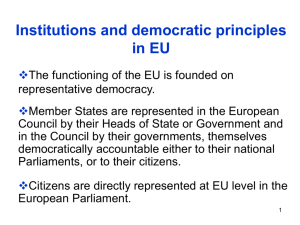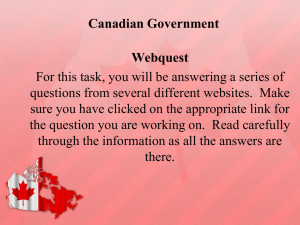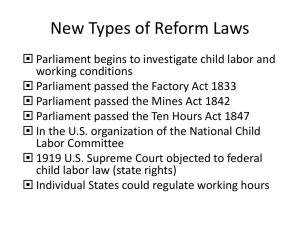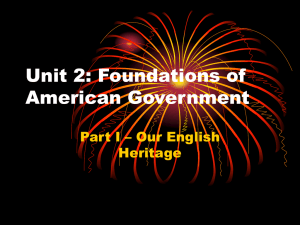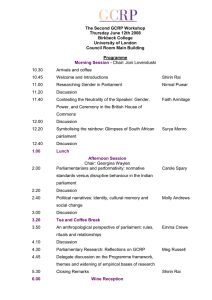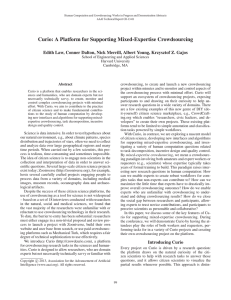How to achieve sustainable use of ICTs to support open and participatory governance?
advertisement
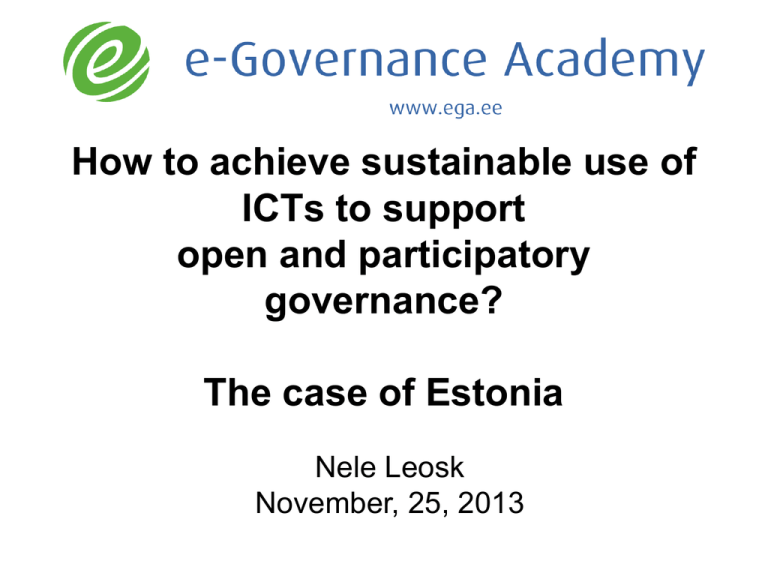
How to achieve sustainable use of ICTs to support open and participatory governance? The case of Estonia Nele Leosk November, 25, 2013 Balanced e-governance Areas of e-democracy Government-Citizen interaction Obligatory content • Statutes of state or local government agencies • job descriptions of state and local government officials; • salary rates and the procedure for payment of additional remuneration • Budget, expenditures etc • information concerning unfilled positions in state or local government agencies • drafts of policy documents and legal acts • lists of the members of political parties Tools for accessing information • Request for information • Websites of public institutions (by 2001, 2002) • Document registers of public institutions • Free access to Internet in public libraries (by 2002) TOM- Today I Decide! • First Government portal for eparticipation • Started in 2001 by State Chancellery ● providing opportunity for everybody to propose and discuss new legislative initiatives via Internet ● ● to enhance dialogue between citizens, public officials, etc Citizen-to-goverment; citizen to citizen!!! Positive sides of TOM • Possibility to rise political issues • Obligation of state administration to respond • Communication between users • Communication with state administration • Everybody can follow proposals and discussions • Well-known to public Problems of TOM 1) Poor mobilization • • • • • Few users Dominance of mega-users Lack of comments No linkage between phases, no feedback No real dialogue between citizen and political decision makers (answers formal, etc) 2) Low impact • • • • Low participation rate Answering a burden Ideas do not correspont with ministries’ priorities Civil servants dealing with answers are not decision-makers Compare with yourself Where did they come from? Why did they come? Open policy making Open policy making – one stop shop approach Reasoning behind internet voting No of internet voters Grass-root activism: civil actions Grass-root activism: petitions Voters compass Estonian ranking and value in UN e-participation index Citizens’ Parliament Rahvakogu Key moments. Dissatisfaction + whistleblowing January-May 2012 Charter 12. Crowdsourcing idea. June-October 2012 The Ice-Cellar Process. November 2012 Crowdsourcing ideas. Rahvakogu platform. January 2013 Analyses and seminars February-March 2013 The deliberation day. April 6, 2013 President takes the ideas to the Parliament. April 12 Results • Nearly 2000 proposals submitted via online portal (www.rahvakogu.ee) and in paper • On the Deliberation day (April 6th), 18 ideas were presented for the discussion and subsequent voting • 16 ideas were handed to the Parliament by the President • Open processing of the ideas by the Constutional Committee of the Parliament; Timetable • 2 draft legislative acts prepared: regulating the procedure of petitions and changes in party financing Lessons and questions ahead • • • • • “The” moment ie timing Relevance of the topic Visibility, holding media focus Security on the outcomes Readiness • Economic crises versus crises in governance • Instititutions versus processes • Institutionalising People’s Assembly Thank you! nele.leosk@eui.eu Skype: neleleosk
